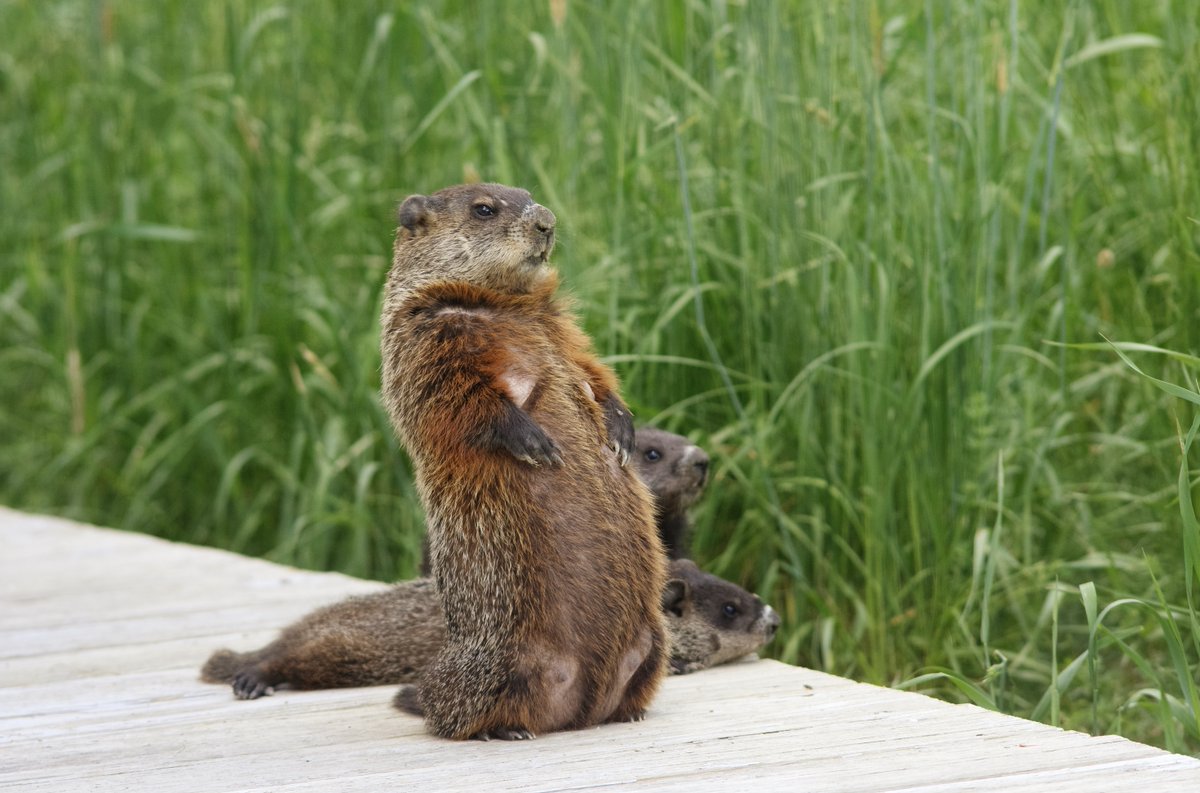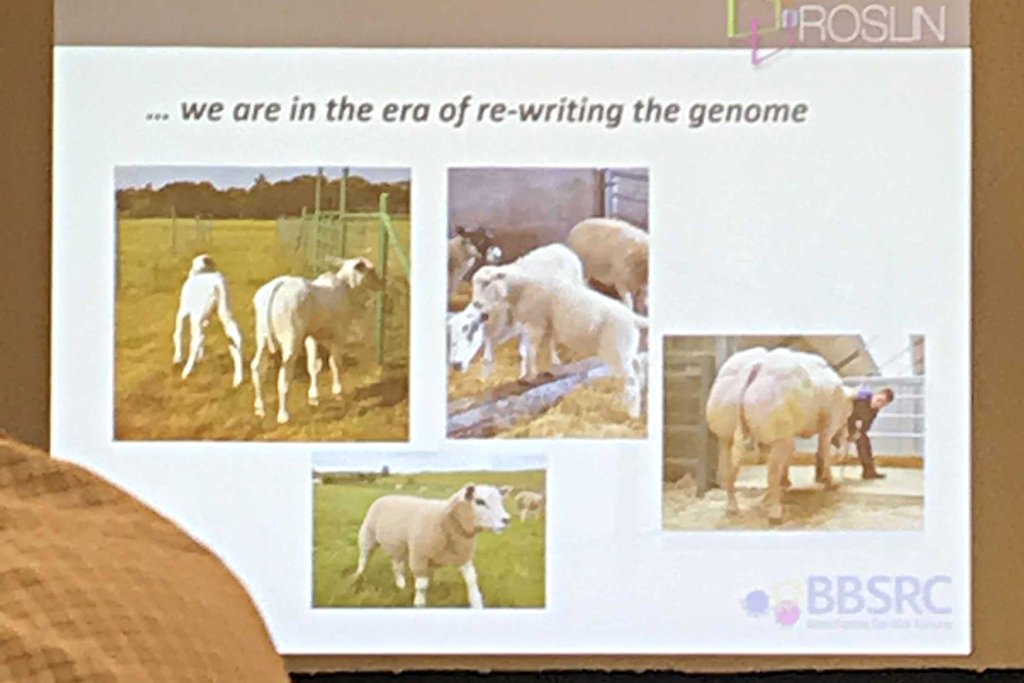
Today I get to cross off my journalistic bucket list … writing about groundhogs for the @nytimes!
And that means it’s time for a groundhog 🧵. For *the* groundhog 🧵.
#GroundhogDay nytimes.com/2022/02/01/sci…
And that means it’s time for a groundhog 🧵. For *the* groundhog 🧵.
#GroundhogDay nytimes.com/2022/02/01/sci…
... and Arthur, her mate. (His facial fur is a little patchy here, as it usually is when he comes out of hibernation.) 

I can see their winter burrows from my writing desk window and for the last three summers Juliette made her summer burrow beneath my deck. Which means: baby groundhogs! 







Yes, I’m aware that this thread should just be baby groundhog videos. Everything should be baby groundhog videos.
Conventional wisdom holds that groundhog fathers depart after mating, leaving mom to do all the parenting. So when Arthur showed up one summer day I was concerned. Was this strange? Sinister? Did groundhogs practice infanticide?
The internet wasn’t very helpful. Groundhogs are common, yet most public-facing information about them is either straightforward natural history or pest control industry scaremongering. I wanted social behavior!
I plugged “woodchuck infanticide”—woodchuck being another name for groundhog, reputedly derived from the Algonquian word ‘wuchak’—into Google Scholar. Up came this paper on groundhog mating systems. (Phew: no infanticide.) academic.oup.com/jmammal/articl…
It was written by Christine Maher, a biologist who for 20 years has observed a single community of groundhogs at @MaineAudubon’s Gilsland Farm sanctuary in Falmouth, Maine. Hence today’s story (based on a visit last summer, of course! Falmouth’s groundhogs are still hibernating.)
Maher has tagged more than 500 individuals, tracked their fates and observed their behaviors. It’s an extraordinary project.
The upshot: groundhogs are not nearly so solitary as conventionally thought. There’s community and long-term relations.
The upshot: groundhogs are not nearly so solitary as conventionally thought. There’s community and long-term relations.

Of course there was lots that didn’t fit into the story, such as the origin of Groundhog Day (here described by @SCOTUSPlaces in what is, I imagine, the first and only intersection of the U.S. Supreme Court and groundhogs.) papers.ssrn.com/sol3/papers.cf… 





Daniel Capper goes even further back to the animal weather oracles of pre-Indo-European societies.
I for one welcome the return of “sacred relationships with animals like weather-forecasting bears, hedgehogs, and badgers.” aquila.usm.edu/fac_pubs/14853/



I for one welcome the return of “sacred relationships with animals like weather-forecasting bears, hedgehogs, and badgers.” aquila.usm.edu/fac_pubs/14853/



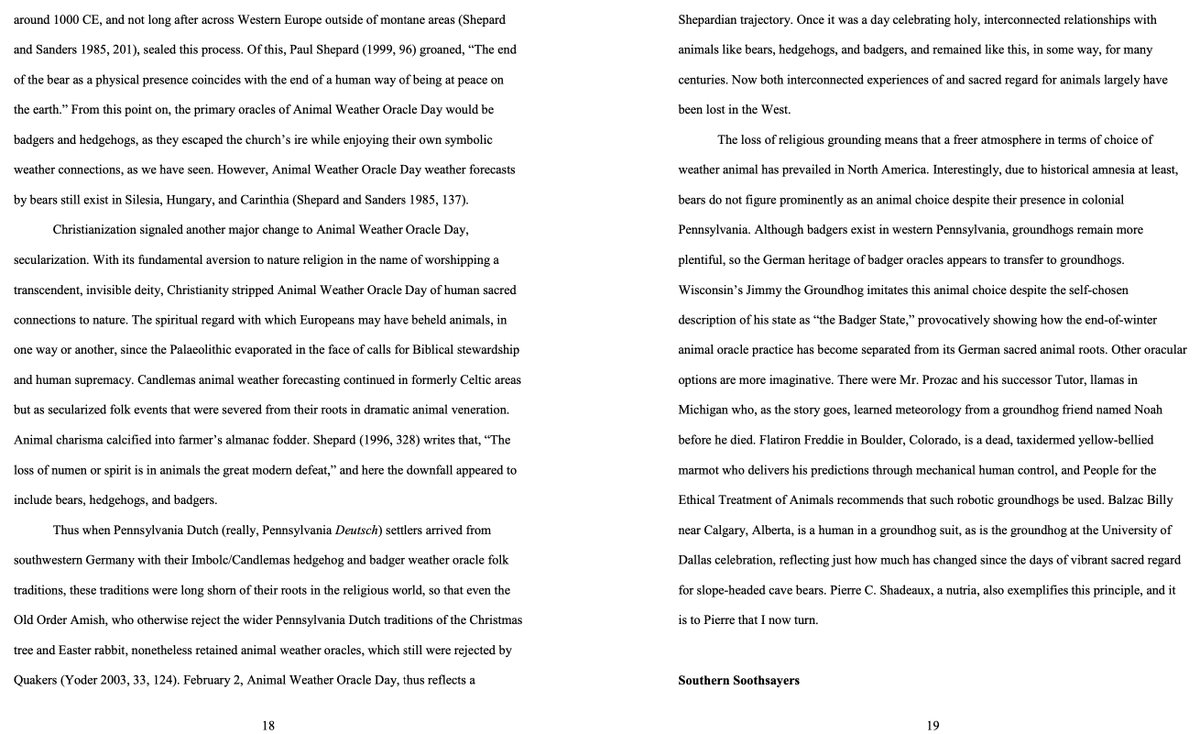
Oh wait is the academic stuff too dry? More BABY GROUNDHOGS.
(Okay, maybe they're not exactly exciting. But to these overworked eyes this looks like pure bliss.)
(Okay, maybe they're not exactly exciting. But to these overworked eyes this looks like pure bliss.)
Juliette's mothering style is delightful. She's devoted but not especially affectionate; she'll stand watch for hours on end, but don't bother her.
In my article I mention Woodchuck Wonderland, the project of two amateur naturalists who’ve spent 15 years observing the groundhogs around their home.
Theirs is *the* definitive account of groundhog behavior and social life. It is extraordinary. woodchuckwonderland.com
Theirs is *the* definitive account of groundhog behavior and social life. It is extraordinary. woodchuckwonderland.com
Seriously, if you’re interested in groundhogs, or know someone who is, buy their book(s).
It’s no less authoritative for not being scientific. There’s much to be said for long, attentive observation. woodchuckwonderland.com/books/
It’s no less authoritative for not being scientific. There’s much to be said for long, attentive observation. woodchuckwonderland.com/books/
They also have a page listing 32 species of plants they’ve seen groundhogs eating, from from clover and dandelion to purslane and oak nuts.
Each has its own taste, no doubt, and season. Perhaps a groundhog’s life is, among other things, one of gustatory variety and delight.
Each has its own taste, no doubt, and season. Perhaps a groundhog’s life is, among other things, one of gustatory variety and delight.

I also mention Chunk the Groundhog, whose 500,000 Instagram followers have a groundhog’s-eye view of Chunk & co. eating veggies.
This is—trust me—very satisfying. If people spent more time watching groundhogs eat the world would be a far better place. instagram.com/p/CZMk24pBPRR/
This is—trust me—very satisfying. If people spent more time watching groundhogs eat the world would be a far better place. instagram.com/p/CZMk24pBPRR/
Adorbs aside, Chunk the Groundhog and Woodchuck Wonderland and Maher’s observations of social life are subtly, profoundly important.
They depict groundhogs as thinking, feeling beings with meaningful social lives.
As persons, if you will.
They depict groundhogs as thinking, feeling beings with meaningful social lives.
As persons, if you will.
Groundhogs are emblematic of Anthropocene nature.
They’re not in danger of going extinct; they can survive, even flourish, in urban and suburban landscapes. The question isn’t how to save them from extinction. It’s whether and how to coexist, to live well, with them.
They’re not in danger of going extinct; they can survive, even flourish, in urban and suburban landscapes. The question isn’t how to save them from extinction. It’s whether and how to coexist, to live well, with them.

.@christianhunold writes of this — not about groundhogs specifically, but all urban animals.
Are “cities that are now teeming with wildlife also cities _for_ wildlife?” he asks. researchgate.net/publication/33…

Are “cities that are now teeming with wildlife also cities _for_ wildlife?” he asks. researchgate.net/publication/33…


Hunold complicates a too-easily-simplified vision of urban biodiversity.
Will vibrant, wild urban nature only be tolerated within a few set-aside protected areas? Or suffuse a landscape shared by humans and nonhumans alike? researchgate.net/publication/31…

Will vibrant, wild urban nature only be tolerated within a few set-aside protected areas? Or suffuse a landscape shared by humans and nonhumans alike? researchgate.net/publication/31…


In Maine as in most places, groundhogs can be hunted and trapped year-round without limit. But an even greater tension exists in urban and suburban areas, where they can legally be—and routinely are—killed to prevent their eating from our gardens or burrowing near buildings.
Last summer a friend said he shoots any groundhog he sees in his neighborhood. He’s protecting his garden.
A fence would also do the job.
And he’s a kind-hearted, nature-loving man! But in our historical moment, lethal control is the norm and peaceful coexistence the exception.
A fence would also do the job.
And he’s a kind-hearted, nature-loving man! But in our historical moment, lethal control is the norm and peaceful coexistence the exception.
Some people also worry about groundhogs transmitting rabies.
Like any mammal, they can be infected—but from 2000 to 2019 there was not a single documented case of groundhog-to-human rabies transmission in the United States.
avmajournals.avma.org/view/journals/… & pubmed.ncbi.nlm.nih.gov/31910075/
Like any mammal, they can be infected—but from 2000 to 2019 there was not a single documented case of groundhog-to-human rabies transmission in the United States.
avmajournals.avma.org/view/journals/… & pubmed.ncbi.nlm.nih.gov/31910075/
John Griffin, the @HumaneSociety’s urban wildlife guy, talked to me about his work resolving groundhog conflicts.
Fears of structural damage are overblown, he said.
Fears of structural damage are overblown, he said.

That said, I just got email from someone saying groundhogs tilted her concrete slab porch foundation.
I'd love to research various construction methods & whether, rather than endlessly fighting them off, it's best to have them burrow in a trouble-free place and use it forever.
I'd love to research various construction methods & whether, rather than endlessly fighting them off, it's best to have them burrow in a trouble-free place and use it forever.
For more on non-lethal approaches to groundhog tensions, here’s the relevant pages from Wild Neighbors, the HSUS book on wildlife trouble prevention. 



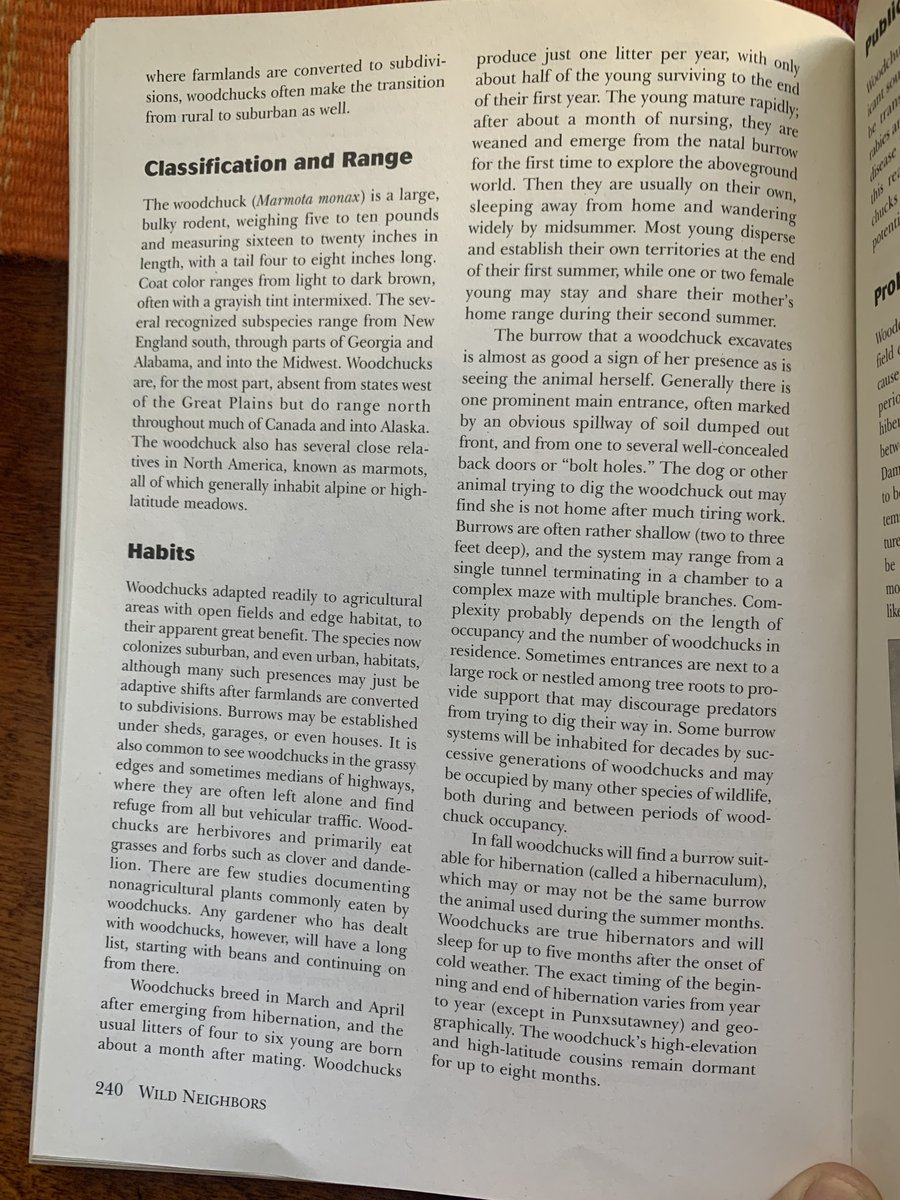



There’s an ecological benefit to protecting them, too. Here are species documented using groundhog burrows in upstate New York; these are “local hotspots of biodiversity,” wrote the researchers.
Would be fascinating to see this studied in other regions! researchgate.net/publication/34…
Would be fascinating to see this studied in other regions! researchgate.net/publication/34…
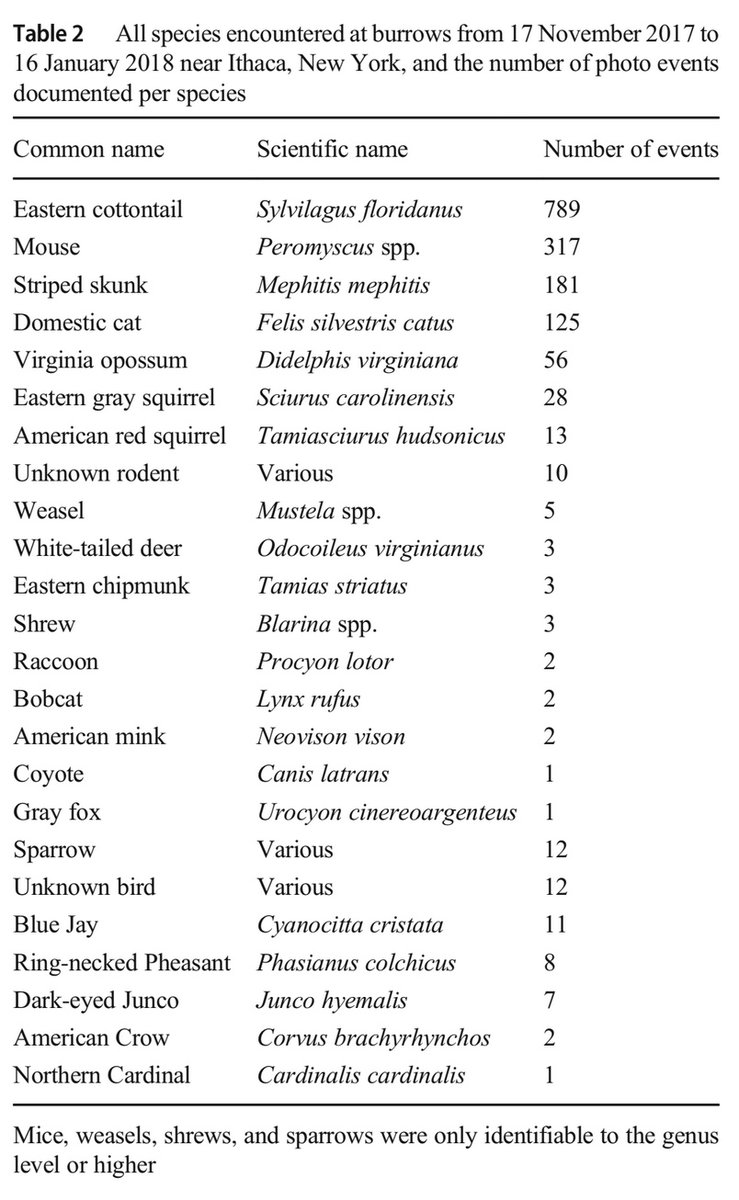
Griffin also spoke of centuries-old burrow complexes inhabited by dozens of groundhog generations. What might they look like inside?
(Even a simple groundhog burrow is a handsome affair, with a dedicated bathroom and bedroom.)

(Even a simple groundhog burrow is a handsome affair, with a dedicated bathroom and bedroom.)
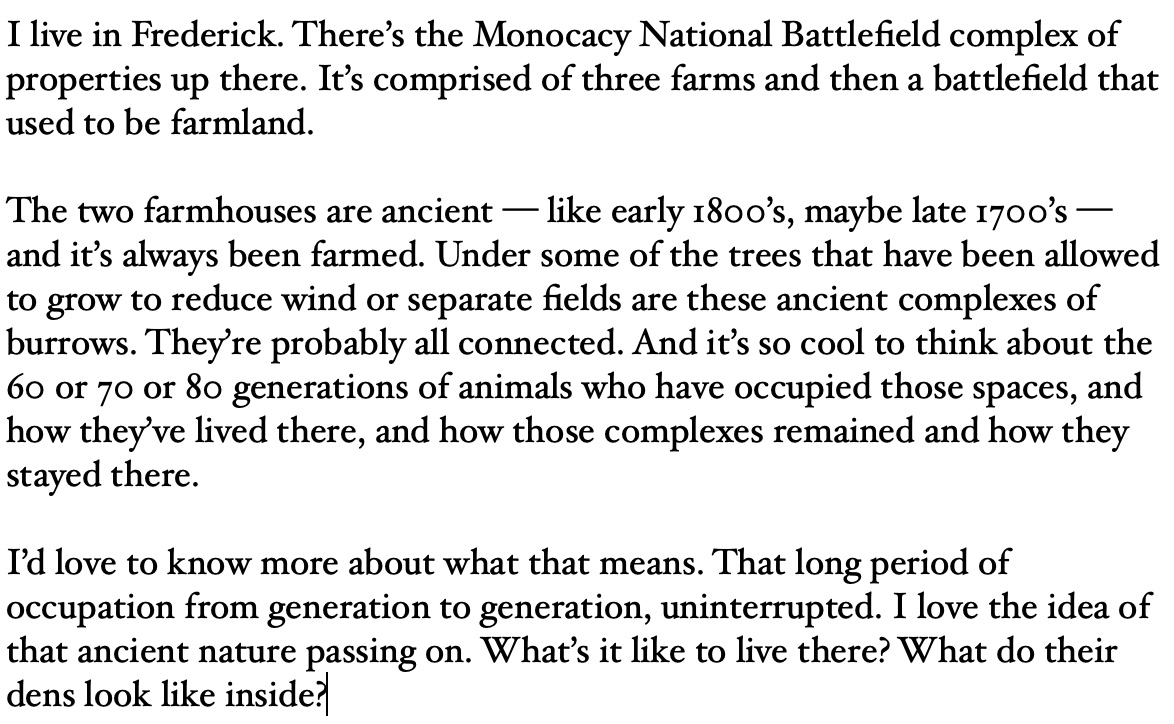
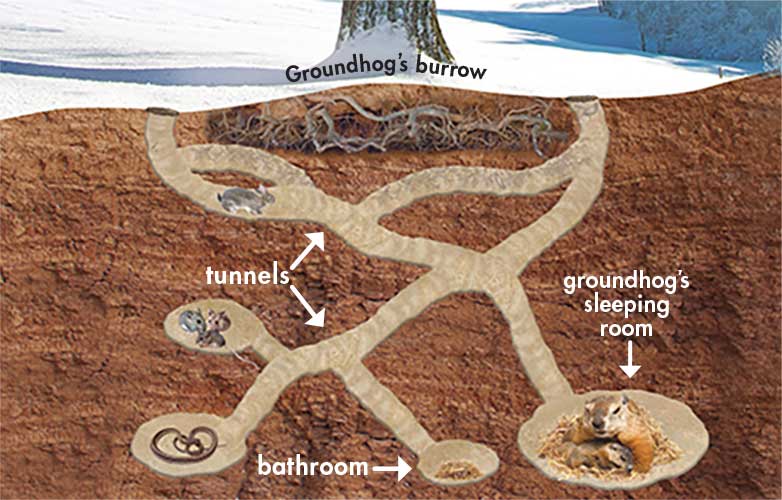
“What are these animals thinking about? How do they feel, knowing that hibernation is coming?” asked Griffin. “What do they dream about in deep sleep? What does that mean? What do they think about when they wake up?”
Spinoff speculative fiction idea: Humans learn how to prolong their lives by hibernating — but it comes at a cognitive cost. Future humans are stuck with a bunch of ultra-rich, near-immortal, cognitively-disabled hibernators. (Ahem @jeffvandermeer) 
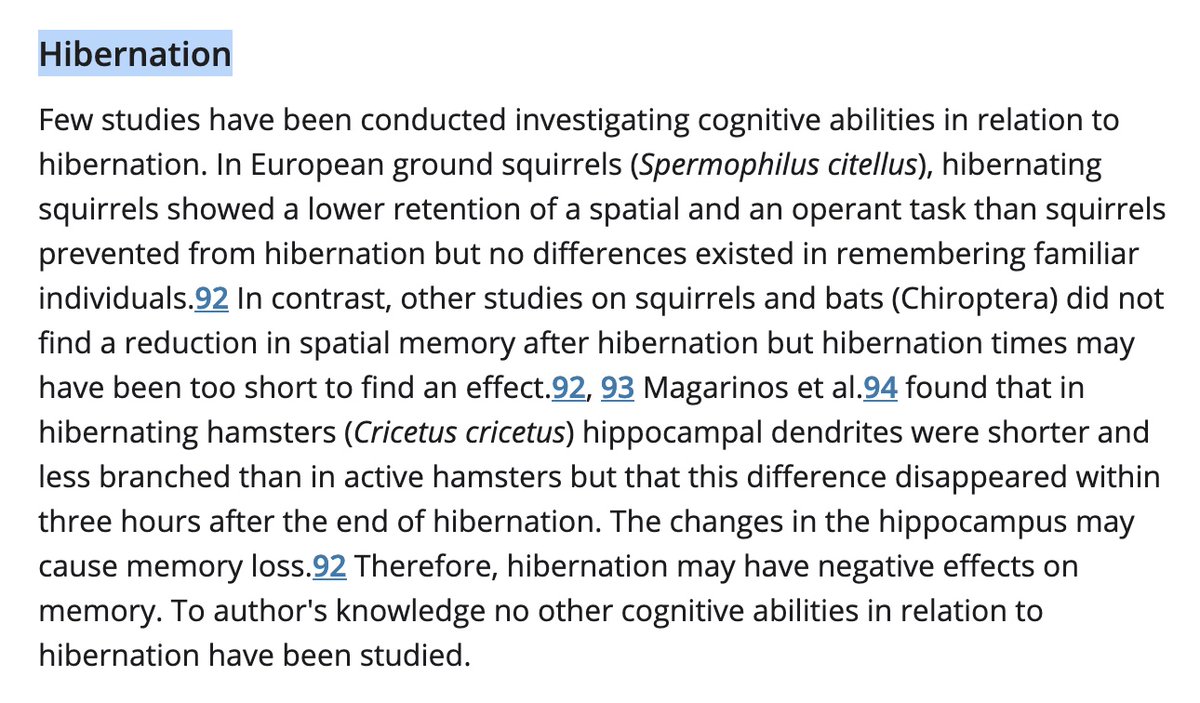
Anyways! My article finishes with Maher describing groundhogs’ relatively simple behavioral repertoire — but there’s so much we still don’t know, such as the meanings of their vocalizations.
At present only their warning whistles have been studied, and just barely.
At present only their warning whistles have been studied, and just barely.

“I don’t think they’re as sophisticated as some of the other species,” Maher told me. “But they probably are coding different amounts of information based on how loud the call is, or how forceful it is, or how repetitive. But again, nobody’s looked at those kinds of things.”
Maher also shared this lovely observation:
“During breeding season, sometimes you can hear courtship vocalizations. These purring and churring noises. They're really soft. You're not going to hear unless you're close to a burrow. I suspect pups and moms do that, too.”
“During breeding season, sometimes you can hear courtship vocalizations. These purring and churring noises. They're really soft. You're not going to hear unless you're close to a burrow. I suspect pups and moms do that, too.”
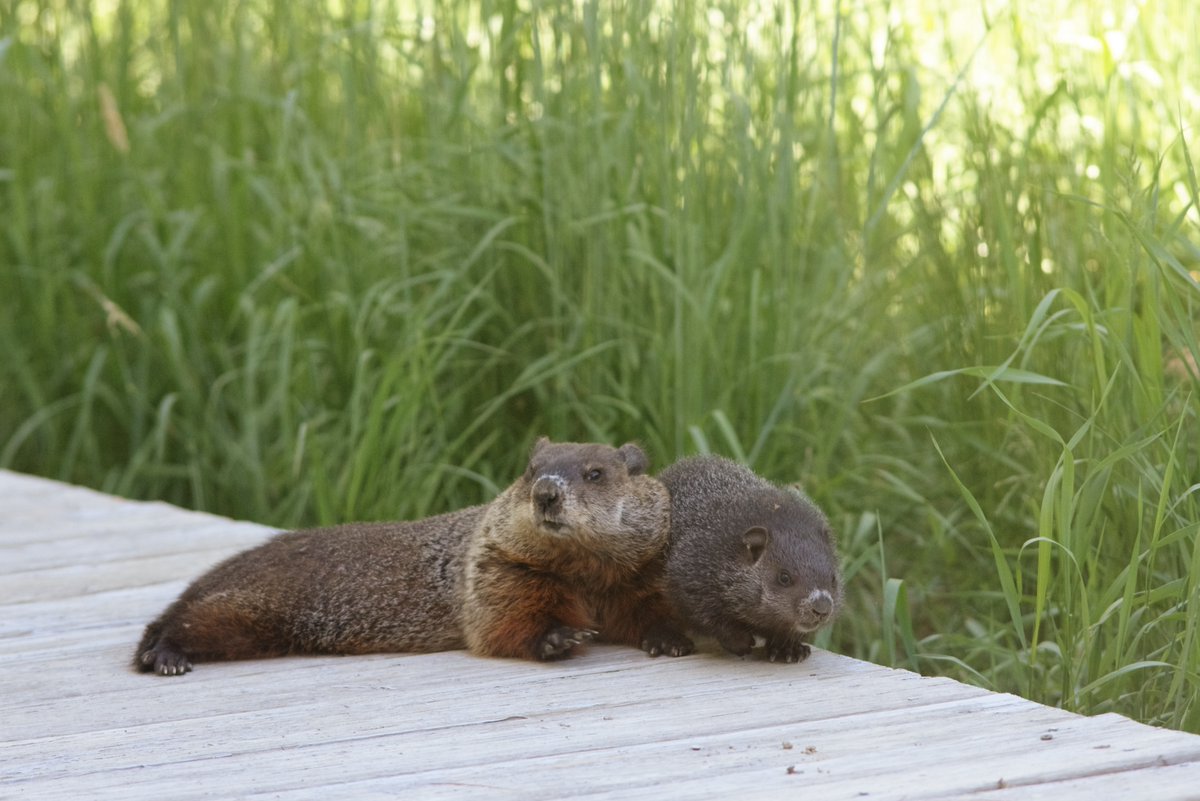
And what goes through their minds? What if, to a groundhog standing motionless, the world is a flood of information, a multitude of sounds and smells and sensations so rich they’d overwhelm us? Or maybe they’re experiencing a zen-like peacefulness our monkey minds only dream of? 

But the biggest question of all, obviously: How much wood would a woodchuck chuck if a woodchuck could chuck wood?
Answer: A woodchuck would chuck all the wood it could chuck if a woodchuck could chuck wood.
Duh.
Answer: A woodchuck would chuck all the wood it could chuck if a woodchuck could chuck wood.
Duh.

Doh! Because I am Bad At Twitter I bifurcated this thread. Continue here:
https://twitter.com/9brandon/status/1488703782963798016
• • •
Missing some Tweet in this thread? You can try to
force a refresh






